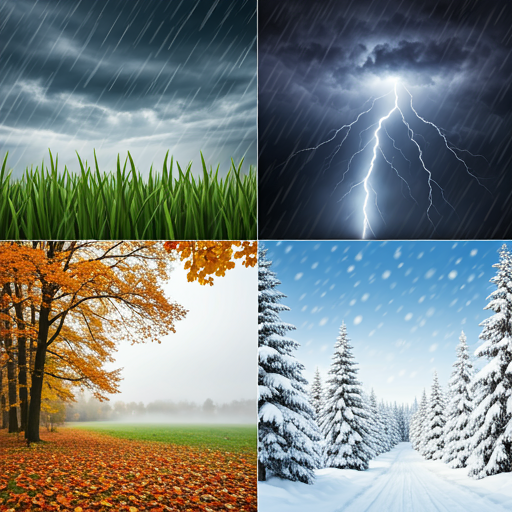The Silent Symphony: How Weather Conducts Deer Movement

By Derrick R. Stallings – HuntingOfficer.com
The crisp autumn air crackles with anticipation as hunters eagerly await the annual whitetail ballet. But the dance of the deer isn’t solely choreographed by the changing seasons; it’s also influenced by the ever-changing stage of weather.
Like seasoned dancers, deer seem to have a sixth sense for atmospheric shifts. As the barometer begins its descent, a subtle change occurs within the deer herd. Their senses sharpen, their movements become more purposeful. This heightened awareness, triggered by the falling pressure, can lead to increased activity as they seek out food or mates. The anticipation of an impending storm can also spur deer into action, as they seek shelter or take advantage of the reduced visibility to move more freely.
Temperature plays a pivotal role in the deer’s dance. When the mercury rises, deer tend to dial back their daytime activity, seeking refuge in shaded areas or near water sources. However, as the sun begins its descent, and temperatures cool, they may emerge to feed or engage in social interactions. Conversely, during frigid conditions, deer conserve energy by minimizing their movements. They may spend extended periods bedded down in sheltered locations, only venturing out for essential needs.
The wind, a silent conductor, can significantly influence the deer’s performance. Strong winds can disrupt their primary defense mechanism: scent. To compensate, deer may alter their movement patterns, seeking areas with natural windbreaks or reduced wind exposure. This can lead to increased activity in specific locations or decreased activity in open areas.
Precipitation, whether in the form of rain or snow, can add an extra layer of complexity to the deer’s dance. Heavy precipitation can limit visibility and make movement difficult, particularly for older deer with worn antlers or hooves. However, light rain or snow can actually stimulate movement, as deer may take advantage of the reduced visibility to move more freely.
The impact of weather on deer movement varies with the seasons. During the rut, the hormonal symphony overrides many weather-related factors, leading to increased activity regardless of conditions. However, extreme weather events can still influence their movements, particularly during harsh conditions. In the off-season, deer are more susceptible to weather-related factors, as they are not driven by breeding instincts.
By understanding the intricate relationship between weather and deer movement, hunters can enhance their chances of success. By adapting their strategies to the prevailing weather conditions, they can position themselves in areas where deer are most likely to be active, increasing their chances of a successful hunt.
*AI Was Used In The Creation Of This Article


